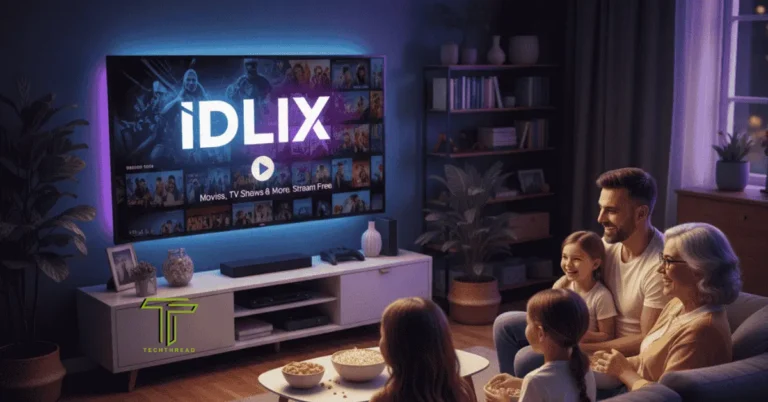The Art Of Effective Roundtable Conversations
In a meeting where only a few individuals talk while others who need a push just sit and listen? This is the main problem in many companies, where important ideas get missed, and the same individuals always dominate the room.
That’s where roundtable events can change the game.
In roundtable discussion, everyone gets the chance to speak, share ideas, and work together to solve real problems. If you are the leading person , running the organization or the CEO of the company.
Table of Contents
Understanding the Power of Open Group Dialogue
It is a type of group discussion where every participant have equal right to speak and contribute. It is used to remove hierarchy and focus on meaningful conversation.
Instead of one person leading or presenting, the roundtable discussion every person in the team speaks about the new ideas. Because of this, every problem can be solved faster and decisions can be shaped better.
What Makes It Different:
- Everyone is heard – No one dominates the room; all voices are heard.
- Ideas flow freely – It’s not about slides or speeches, but sharing real thoughts.
- Size stays small – 6–12 people is ideal for table talk.
- Simple structure – A simple agenda keeps things organized & flexible.
- Guided, not controlled – A moderator keeps balance and direction.
Why This Format Works:
- Improves decisions – You get input from the people in their field.
- Saves time – Group discussion often uncovers answers faster than long email chains.
- Builds stronger teams – People feel respected & mutual understanding when they’re part of the process.
- Adapts to your setup – Works just as well online as it does in a room.
Inclusive Talks Drive Better Results
Roundtable conversations give your team or network a chance to show capabilities, speak up, and work together. Not like other meetings in which only the boss or organiser speaks. On the other hand this format creates space for useful, direct, and open conversation.
There are following points how this whole process works:
Effective Roundtables:
- Everyone contributes
You hear from different roles, not just managers or team leads. This helps you catch blind spots early. - Titles don’t matter
People speak openly, that removes pressure and helps get real ideas. - Team connect more
A relaxed, open setup makes it easier to listen, respond, and trust each other. - Creative ideas
With no fixed slides or status updates, there’s room for deeper thought and real solutions. - Creating a strong personal brand
Hosting these sessions shows your value input and collaboration, a quality clients and partners look for.
Choose the Right Setup to Get the Effective Roundtable
Not every roundtable works the same way. To get more positive results, you need to choose the format that matches your purpose. Are you solving a problem? Gathering insight? Exploring new ideas? Your format should reflect that goal.
Here are some common types of roundtables and when to use them:
Types of Roundtables:
- Idea Sharing Roundtable
Great for discussion, innovation, or exploring new trends. Works well with creative teams or development groups. - Decision-Making Roundtable
Best when teams need to align on strategy or select between options. Useful in operations, finance, or planning teams. - Problem-Solving Roundtable
Use this when there’s a recurring issue or roadblock that needs group input. This format lets different functions contribute. - Executive or Leadership Roundtable
Often used for co-worker interaction, among senior leaders. These help explore industry shifts or company direction. - Virtual Roundtable
It is Ideal when your participants are remote or global. With the right tools, it works just as well as in-person and often allows for more flexibility.
Steps for Ideal Roundtable
Once you decide about your topic, it’s time to plan the session. It might look casual, but the best ones are carefully set up. A little preparation before the session works better in keeping the conversation focused and meaningful.
Here’s how to get started:
Step 1: Set a Goal
You have to decide what you want to achieve from the discussion. If you are solving a problem, gathering feedback, or building connections between the individuals? A clear goal helps to shape everything.
Step 2: Pick the Relatable People
Invite the right individuals who are related to the field. Off field people can make it messy. Include 6–10 field related participants to keep things balanced and organized.
Step 3: Choose a Focused Topic
Keep the topic specific. Instead of “marketing strategy,” go with “new lead generation ideas for Q3.” This keeps the talk grounded.
Step 4: Create an Agenda
Do not overcomplicate things. Just 3–4 important points or questions are enough. Share it before time so that everyone come prepared.
Step 5: Assign a Moderator
Choose someone who is confident to talk, keep it moving, and make sure to give everyone a chace to speak.
Step 6: Prepare the Space
If it’s in office space, set up a space where everyone can sit in a circle or around a small table. For webinar, test your platform, audio, and any tools like polls or breakout rooms.
Simple Ways to Keep the Conversation Strong
Planning the session is not the part. What really matters is how you deliver the goal/agenda to members. A roundtable is only useful if people stay engaged, feel heard, and walk away with something of value.
Here are a few things you can do to make that happen:
Ask Interesting Questions
Avoid the yes-or-no stuff. Use open-ended questions that make discussion interesting. Try things like:
- “What’s a challenge you’ve faced with this issue?”
- “What would you change if you are in full control?”
Give Everyone Chance
Some people talk a lot. Some stay quiet. It’s moderator’s job to notice that and give chance to quiet members. A simple “Let’s hear from someone” works well to encourage him/her to speak.
Keep on Track
It’s easy to move off-topic. The moderator should bring the roundtable discussion back if any disturbance happens. Use the agenda as a guide, not a rulebook so that everyone participate in the discussion.
Use Simple Tools if Needed
If you’re online, use chat boxes or screen sharing to keep it interactive. In person, try sticky notes, a whiteboard, or just a notepad for collecting key points.
End with Takeaways
Before ending up, ask the members: “What did we learn?” This helps to remember the value of the discussion and shows it value.
Mistakes to Avoid
Even a well-planned roundtable can fail if few things go wrong. Most of the issues are easy to spot and fix as long as you know what to do.
Here are some common mistakes that can prevent your good session:
Talking Without a Clear Purpose
If your group doesn’t know why they’re meeting, expect the conversation to wonder. Always set a clear goal before you start the discussion and remind everyone about the session.
Letting One Voice Take Over
Sometimes, one person dominates the talk. Its impact silence others and shift the focus. A good moderator will guide the discussion so that everyone gets its turn.
Going Too Broad
If your topic is difficult to understand, the team don’t know where to begin. Keep it focused. Instead of “improving operations,” try “fixing delivery delays in Q3.”
Ignoring Pre-Session Engagement
If attendees won’t contribute much. Share the agenda and talking points a few days before the roundtable. Ask them to bring one idea or question.
Forgetting to Follow Up
The roundtable might go well, but if nothing happens afterward, people won’t see the point. Send a short recap, next steps, or even just a thank-you message.
Mistakes happen but a little awareness goes a long way in keeping your roundtable useful and focused.
What You Do After the Roundtable Matters Most
After the end of roundtable discussion, make sure the work should be done. What happens after the discussion is just as important as the discussion. If you don’t act on what was discussed, people will feel like their input went nowhere.
Here’s how to make the most of the post-event:
Send a Quick Recap
After the end of the discussion, share a simple summary. It doesn’t need to be fancy, just the key points, what decisions made, or ideas that are discussed. This shows respect for everyone’s time and contributions.
Highlight Action Items
If any tasks came out of the session, make them clear. Which individual is doing what? What is the timeline? Everything needs to be structured when it comes to follow-through.
Share ideas to others
Sometimes, useful ideas come up that others in the company should hear. Note down important points or even make a presentation.
Thank Your Participants
A short thank-you email to your team helps build stronger relationships, especially in external or back to back roundtables where the goal is long-term trust.
Plan the Next Step
If the session ends up with a bigger issue, schedule a follow-up roundtable meeting. Keep the door open for continues learning.
The value of a roundtable do not stop when people leave it grows when you keep the ideas moving.
Faq’s
What is meant by a roundtable discussion?
A roundtable discussion is a small group conversation where everyone has an equal chance to speak. It’s often used to share ideas, solve problems, or gather feedback in a more open and less formal setting than a traditional meeting.
What is the purpose of the round table?
The main goal of a rroundtable discussion is to bring different voices together to explore a topic. It helps teams find solutions, understand new viewpoints, and build stronger collaboration. It’s also useful for breaking down hierarchy and encouraging honest input.
How to prepare for a roundtable discussion?
Keep these steps in mind:
- Read the agenda or topic in advance
- Think about your own experience or ideas related to the topic
- Be ready to listen, ask questions, and take part in the discussion
- Respect time and give space for others to speak
What is the difference between roundtable and panel discussion?
In a panel discussion, a few selected experts speak while the audience listens. In a roundtable, everyone takes part in the conversation. A panel is one-way; a roundtable is a group exchange.
Also Read: NBA 2K Scary Terry Shoe: The Ultimate Fusion of Basketball & Gaming







